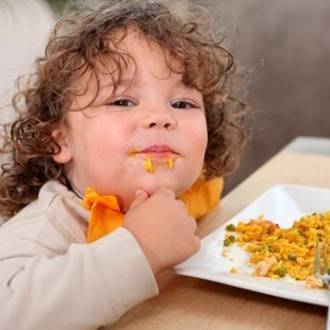Shop
01579
https://www.under5s.co.nz/shop/Hot+Topics+Articles/Food+%26+Eating/Getting+to+grips+with+fussy+eaters.html
Getting to grips with fussy eaters
|
Fussy eating is very common in young children, and a great frustration to many parents and caregivers. However our tips on how to encourage good eating habits in your child will help make mealtimes a breeze!
|
You might also be interested in ...
Managing infant reflux
Infant reflux is not uncommon in babies, but how do you go about managing reflux and doing what's best for your baby? For many babies with reflux a few home management techniques will help ease their symptoms. However there is reflux medication available for those babies who might need it. We take a look at both home management techniques and reflux medication so you can see what might work for your baby.
Removing plasters from kids skin
No-one likes having plasters removed from their skin, not even adults! This simple and effective method will help remove plasters quickly and easily, and with minimal pain from your kids skin.
join usJoin us on social media for all our latest news. |
sign upSign up and receive our latest newsletters. |
|







Fussy eating is very common in young children, and a great frustration to many parents and caregivers. Find out why they are prone to fussy eating, how you should respond and what you can do to help alleviate the situation.
7 Tips on getting to grips with fussy eaters
1. Why are young children prone to fussy eating?
There can be a number of reasons why toddlers are prone to fussy eating such as:
2. How should adults respond to fussy eaters?
Don’t stress. If your child’s height and weight are within what’s expected and they are healthy, then they must be getting the food and nutrition that they need.
Try to keep meal times as an unhurried sociable experience that everyone enjoys.
Accept that your child will sometimes refuse food and calmly take the uneaten food away without offering an alternative.
3. Try mini meals
Young children need healthy snacks in between meals. They only have small tummies, so need more frequent mini meals to satisfy their hunger.
Most small children have about 5 meals a day - breakfast, morning snack, lunch, afternoon snack and dinner.
Remember that children are not necessarily hungry at the same time as adults. Often parents are puzzled that their children don’t eat much of their evening meal. Children often fill up during the day when they are most active, so are less hungry in the evening.
During times of rapid growth your child’s appetite can vary from day-to-day so you may need to adjust the amount you offer. Watch your child’s eating patterns to work out when and how much food they need.
4. Be a good influence
You are your child’s best influence when it comes to good eating habits. When parents model eating a wide variety of foods, children are likely to do the same.
A great way to get your child to accept new foods is to offer tastes of what you are having. Sometimes your child may want to choose food from your plate just because they feel what you have is different from their own food.
Family meal times are important occasions to support good eating habits as well as socialisation. The way that adults behave around food and family traditions shows a child the family culture around food.
To encourage good eating habits have as few distractions as possible at meal times. Make sure the TV is turned off and cell phones don’t interrupt your conversation.
Meal times can be a fun time to share with each other what has happened during the day, while planning for what will happen tomorrow. Young children like to be up at the table and to join in with the conversation.
5. Prepare food together
Children are more likely to eat new foods if they feel included in food preparation and production. Perhaps work with your child to make a vegetable garden at home. This is a great way to help children become more familiar with different vegetables while they learn through gardening.
Your child may also like to help wash or peel vegetables. Perhaps get your child to help you when baking by measuring, stirring and finding ingredients.
6. Always have choices
Having a choice of what to eat helps your child to feel in control. For young children a choice of two items is best, any more can be too hard to select from. For instance ask whether they would like to have a pear or an apple with lunch.
If your child refuses to try something new outright, use the 'try just one spoonful' rule with your child, or say 'you don't have to like it, you just have to try it'.
Children, like adults, can also be influenced by the appearance of food. Think about what looks appealing to children in terms of colour, shape, and presentation of food.
7. Remember
Fussy eating is a very common behaviour in young children and can be partly to do with having power and control.
Parents and caregivers should try not to stress out about their children’s fussy eating if they are healthy and active, encourage them to try new things, lead by example and have regular family meal times together.
Like the article you've just been reading? Click on the Refer A Friend link at the top of the page and send the details to friends who might like to read it too.Tell your friends
More Hot Topics for you to enjoy
Source: This article has been written by Creators, a nationwide service offering quality home-based care and education. Creators are passionate about seeing every child’s unique talent being recognized and nurtured.